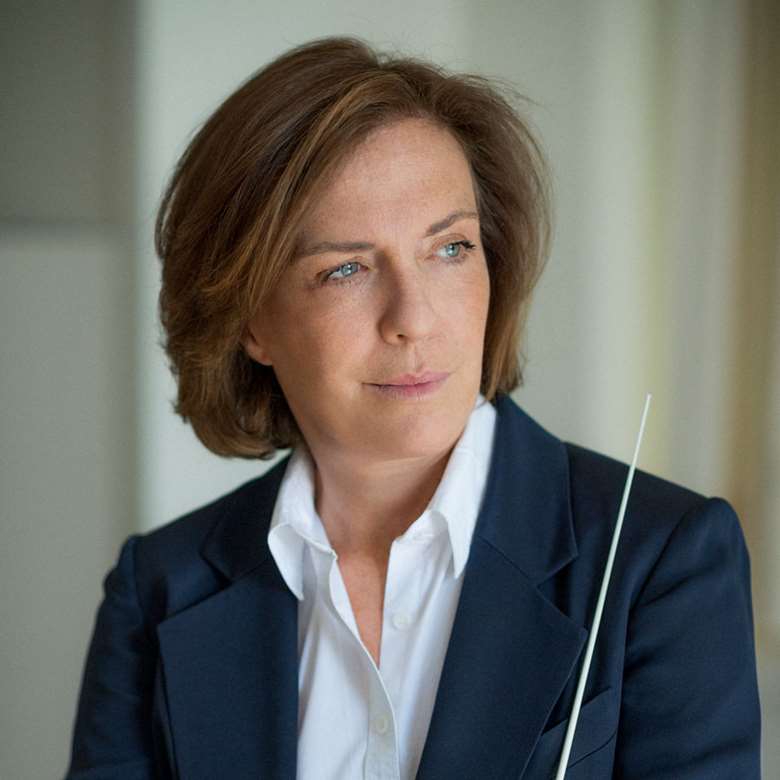Laurence Equilbey on Louise Farrenc the symphonist
Laurence Equilbey
Tuesday, July 13, 2021
The conductor pays tribute to Louise Farrenc, a composer whose works deserve a place in symphonic programmes and in the discography

I always love to keep an ‘ear’ out for rare and undervalued works. Four years ago, Insula orchestra was invited to make their debut at the Barbican – it was an honour to perform there on International Women’s Day and for the programme I chose to present Louise Farrenc’s little-known Symphony No 3. The occasion brought into sharp contrast the opportunities I have had, in pursuing my dream as a conductor and founder of my own Insula orchestra and accentus Choir, with that of a female musician living at the start of 19th century.
Despite not being allowed to follow composition classes at the Paris Conservatoire, Louise Farrenc still became a composer. Born in Paris in 1804, she started to learn the piano at the age of six and took lessons from the great virtuosos of the day Johann Nepomuk Hummel and Isaac Moscheles. At the age of 15, she began composition lessons with the Czech-born Anton Reicha, a life-long friend of Beethoven.
While the holy grail of becoming an opera composer was in no way open to an aspiring female composer, Farrenc forged her own path and gained recognition from her contemporaries such as Hector Berlioz who wrote perhaps with slightly damning praise:
‘Madame Farrenc has shown us a well-written overture, arranged with a talent that is rare among women.’
In the course of the 1830s Louise Farrenc established a reputation as a pianist and in the 1840s gained praise for her chamber compositions. In 1842 she made history by becoming a professor at the Paris Conservatoire – the first woman in Europe to fill a senior position of this kind. She went on to spend 30 years at the institution, where she successfully fought to achieve remuneration on an equal level with the male professors. Her daughter, Victorine (born in 1826) became a successful pianist in her own right; when she died at the age of just 32 her mother ceased her public activities as a composer, although she lived until 1875.
Farrenc was, of course, unusual as a female composer who achieved significant recognition, but she was also unusual as a symphonist. The symphony was seen as a Germanic form, and, indeed, Farrenc’s works are closer to the spirit of Beethoven, Mendelssohn and Schumann than to her French contemporaries. She had to wait four years for the premiere of her Symphony No 1: she completed it in 1841, but it was not until 1845 that it was first performed – in Brussels rather than Paris. The programme also included Beethoven’s Piano Concerto No 5, with Victorine Farrenc as soloist. The first Parisian performance followed a few months later at a benefit concert mounted by Farrenc herself; Victorine appeared at this concert too, playing her mother’s Variations sur un thème du Comte Gallenberg.
The critic Henri Blanchard was full of praise: ‘This interesting musical event has placed Madame Farrenc as a composer who surpasses the capacities of any woman who has written music, rivalling our sex and honouring the country of her birth with an exceptional talent that unites a feeling for melody with the science of sound.’
The premiere of Farrenc’s Symphony No 2 took place in Paris in January 1846, just a month after its completion – Farrenc again acted as the impresario – but she had to wait longer for the first performance of her Symphony No 3, which she completed in 1847. Gratifyingly, the 1849 premiere was given by the prestigious Société des concerts du Conservatoire as part of its subscription season. This was a significant achievement – a premiere with Paris’s most important concert promoter with one of Europe’s most distinguished orchestras, as part of its regular subscription series.
Farrenc continued composing with her attention on German genres of orchestral and chamber music. It indicates a clear focus on her musical values and a remarkable independence not only from her socially approved role as a woman, but from the surrounding musical scene and prevailing contemporary tastes. After the death of her daughter, Farrenc ceased to compose.
I discovered the work of Louise Farrenc a few years ago, but I waited for the perfect moment to perform her Symphony No 3, as it is her finest work. This symphony has been immaculately constructed, and uses fascinating rhythmic motifs, very powerful orchestration, beautiful melodic themes evocative of Mendelssohn (Felix!) and a Beethovian vigour. It definitely deserves to be a mainstay in the performance canon and does not shrink in stature when programmed alongside music of Beethoven, as we did at the Barbican and in Paris at our home La Seine Musicale, recently filmed by Arte TV. I hope Louise Farrenc can now be judged in her own right as a significant composer.
This recording is the first step towards a complete symphonic work by Louise Farrenc. In the course of this project, we are keen to highlight the works of her contemporaries such as Emilie Mayer, Fanny Hensel-Mendelssohn and Clara Schumann. We owe it to these works, which were often not performed during the lifetime of their composer, to interpret them with the greatest possible care.
So that these talents, still in the process of being rediscovered, will finally find their rightful place in symphonic programmes and in the discography.
Louise Farrenc’s Symphonies Nos 1 & 3 is out now on Erato









